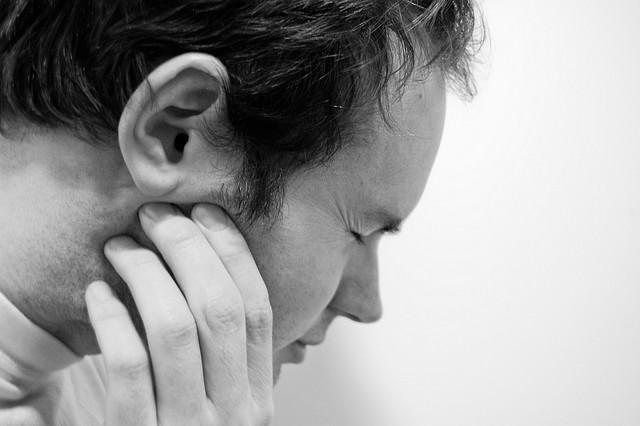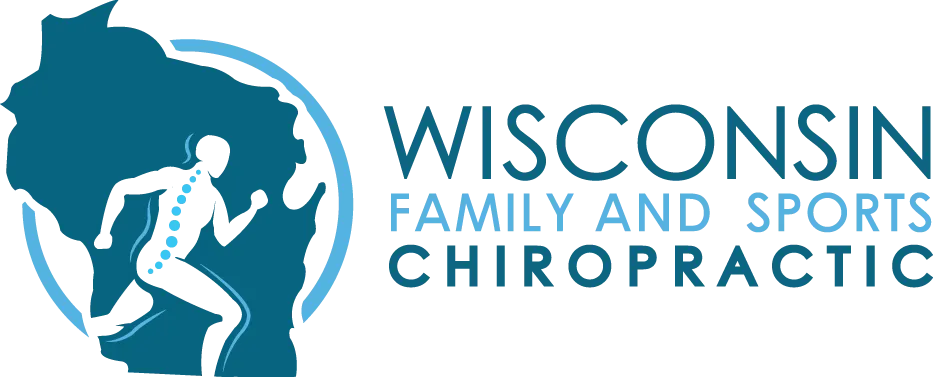
- posted: Jan. 27, 2017
For our first official blog, we decided to tackle a condition not traditionally seen as being treated by chiropractors, the temporomandibular joint (TMJ). Although very complex, and highly under-appreciated, the treatment of this joint is often quickly and easily accomplished through conservative care. Whether you are a “TMJ sufferer” or a manual therapist looking to help out more patients, we’ll walk you through some of the most important aspects of the TMJ and how they might be affecting you.
GENERAL OVERVIEW
The TMJ is a joint that attaches the mandible (jaw bone) to the skull. In between this joint we have a small articular disc that follows the mandible as we open and close our mouth. Occasionally this disc will slip forward on the mandible and the highly innervated tissue sitting behind the disc gets pinched and can cause pain. When this happens, you can hear a popping/grinding noise and will possibly have pain. These symptoms are typically referred to as “TMJ” but this is a misnomer and should be referred to as “TMD” or temporomandibular disorder.
SYMPTOMS
Although symptoms will vary based on the individual and the severity of the condition, the following are common with TMD: Jaw muscle pain and spasms, popping/grinding at the TMJ, pain at the TMJ, decreased mouth opening, increased tooth sensitivity to hot and cold, tooth wear, tooth mobility, headaches and ear pain. You can have any combination of these symptoms to be diagnosed with TMD.
CAUSE
Typically, TMD will have multiple causes that, when combined, create the symptoms associated with the disorder. Some of the most common include: teeth grinding, stress, muscle tightness, injury and arthritis. Recently there has been some research to support the effect of posture and limited segmental neck dysfunction (joint restriction) on TMD, which is easily treated by chiropractors.
DIFFERENT TYPES
TMD typically presents with either a reduction in the disc or no reduction. Basically, this means that when the articular disc slips forward it either snaps back in place (reduces) or it continues to stay forward (does not reduce). When you have a disc that reduces, you will typically have a noise during mouth opening/closing but you will be able to open your mouth fully. On the contrary, when you have a disc without reduction you will have no clicking/grinding but you won’t be able to open your mouth fully. Of these two, no reduction in the disc is typically the more debilitating of the two since you lose your ability to fully open the mouth and it is often very painful.
TYPICAL TREATMENT OPTIONS
Treatment of TMD will vary due to many aspects including severity, the type, and symptoms among many other things, but here are some of the most common non-conservative treatments used for TMD. Patients will usually be started with over-the-counter analgesics and NSAIDS, splinting and physically altering the contact pattern of the teeth. If these are unsuccessful, they may receive botox injections, steroid injections, and surgery. These treatments are mostly intended to control symptoms and will offer little in the form of treating the disorder. These more invasive treatments should be avoided until all conservative care options have been exhausted.
HOW CAN CHIROPRACTIC CARE HELP
Although the standard treatment options will help control some of the symptoms, few actually address the cause of the pain in the first place. The following conservative options not only help to reduce symptoms, but will treat the cause of the TMD.
Posture: One of the simplest things any suffer of TMD can do is take a look at their posture. Multiple studies have shown that posture (especially when the head is jutted forward) can cause or exacerbate symptoms. This is likely due to the body recruiting different/wrong muscles to perform everyday tasks that they weren’t designed to do in the first place. Jutting the head forward is a lot like holding a heavy box away from your body with your elbows locked. It requires a lot more muscles not used to this task and it’s just not efficient.
Myofascial Release: Chiropractors are trained to feel for abnormally tight muscles, and when the jaw muscles get tight for a long period of time, they can get “knots” or trigger points within them that may require some muscle release (think of a deep tissue massage but not enjoyable at all). It is very effective and you often see improvement instantly.
Movement Re-training: Like we mentioned earlier, sometimes TMD occurs due to dysfunctional movement patterns, with that being said, one good treatment is to re-train the jaw muscles to work more appropriately. When the muscles are trained to move more efficiently, it typically takes stress off the muscles that pulls the articular disc forward, therefore decreasing symptoms. There are multiple ways this can be done, and often times you can see dramatic improvement instantly.
Neck Evaluation: There has been a lot of research that shows that there is a high percentage of people with TMD that also have an underlying and undiagnosed neck conditions. If you have TMD and you aren’t getting your neck looked at, no amount of postural correction or rehab will fully remove your symptoms. Things such as decreased range of motion, headaches, ear pain and neck stiffness are a few indicators that the neck might be playing a role in your TMD.
Manipulation: Although gentle oscillations can be used for all types of TMD, your typical high-velocity adjustment of the TMJ should be used sparingly. The best results that have been seen using this type of adjustment is with the non-reducible disc in which the disc is “stuck” forward and you are unable to open your mouth fully. This adjustment will allow the disc to relocate to its proper position in the TMJ, allowing full mouth opening.
Not only will all of these treatment options here treat your TMD symptoms, but they will also treat the underlying cause so you can get back to a click-free and pain-free life!
Don’t hesitate to share this with anyone you know may be suffering from TMD and have seen little success with non-conservative treatments! Also, if you have any questions or comments, feel free to comment in the section below or email us directly at [email protected]
Office Hours
By Appointment Only
8:00 am - 7:00 pm
Closed
8:00 am - 7:00 pm
8:00 am - 7:00 pm
8:00 am - 7:00 pm
9:00 am - 12:00 pm
Closed
